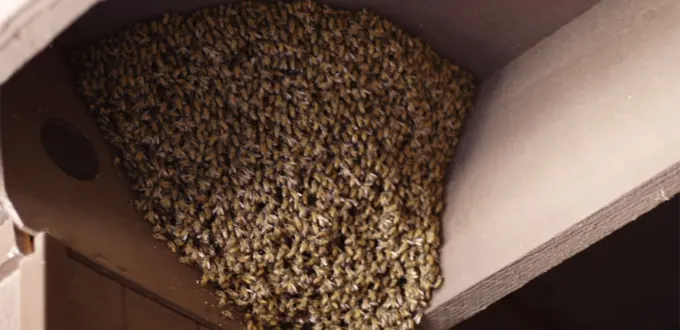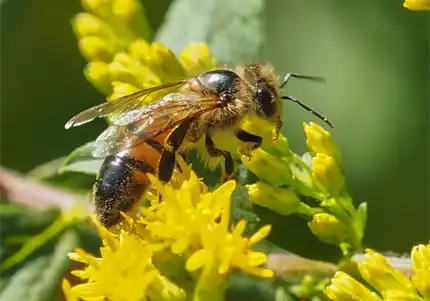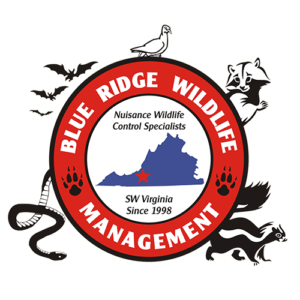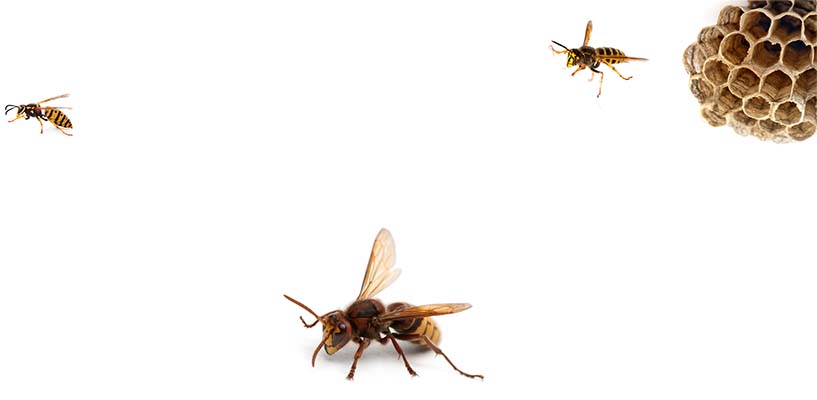
Bees in Virginia
Honey bees in Virginia, also known as Apis mellifera, are a subspecies of the western honey bee. They are approximately 12-15 mm in length, with a distinctive yellow and black striped abdomen. The head and thorax of honey bees are covered in fine hairs that aid in collecting pollen, while the wings are transparent and iridescent. Honey bees are known for their communication skills, which they use to navigate to food sources and to alert the colony of potential dangers.
Honey bees in Virginia are highly social insects, living in large colonies that can contain up to 80,000 individuals. The colony is headed by a queen bee, whose primary role is to lay eggs. Worker bees, which are all female, perform a variety of tasks including collecting nectar and pollen, tending to the queen and her offspring, and defending the colony. Male bees, or drones, do not have stingers and their sole purpose is to mate with the queen.


The Role Bees Play
Bees play a vital role in the ecosystem of western Virginia by pollinating a wide variety of plants. This is particularly important for the region’s agricultural systems, which rely on bees to pollinate crops such as apples, peaches, strawberries, and blueberries. In addition to helping produce fruits and vegetables, bees also contribute to the overall health and biodiversity of the area by pollinating wildflowers, trees, and other plants.
However, bee populations in western Virginia and across the world are facing significant challenges due to habitat loss, pesticide use, and climate change. This has led to declines in both native and managed bee populations, which can have far-reaching consequences for both the environment and human societies. To help address these challenges, conservation efforts are underway in western Virginia to protect and restore bee habitats, reduce pesticide use, and promote sustainable agricultural practices that support bee populations. By working to protect bees, we can help ensure the continued health and productivity of western Virginia’s ecosystems and agricultural systems.
Challenges to Virginia’s Bees
Native bee populations in Virginia face multiple challenges that threaten their survival. Habitat loss due to urbanization, agriculture, and land-use changes has resulted in a reduced availability of food and nesting sites for native bees. Pesticides, such as neonicotinoids, have also been linked to declines in bee populations, interfering with their ability to forage, navigate, and reproduce. Additionally, diseases such as Nosema ceranae and deformed wing virus have a significant impact on bee health and survival.
These challenges must be addressed to ensure the continued presence of native bee populations in Virginia.
The decline in native bee populations is a concern not only for ecological reasons but also for economic reasons. Native bees play an important role in pollinating crops such as apples, berries, and melons, and their loss could have significant impacts on Virginia’s agricultural industry.
In 2015, the Virginia Department of Agriculture and Consumer Services developed the Virginia Pollinator Protection Plan to address the decline of pollinator populations in the state. The plan outlines strategies for protecting pollinators, including bees, through habitat restoration, reduction of pesticide use, and education and outreach to the public and agricultural community.
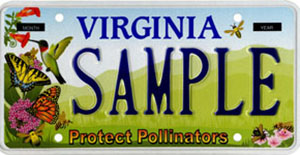
Habitat loss is a major threat to bee populations in Virginia. Conservation efforts have focused on restoring and creating habitats that provide food and nesting sites for bees. The Virginia Native Plant Society and the Virginia Department of Game and Inland Fisheries have worked to promote the planting of native wildflowers and grasses, which provide important food sources for bees. The Virginia Department of Transportation has also incorporated pollinator-friendly vegetation in roadside plantings.
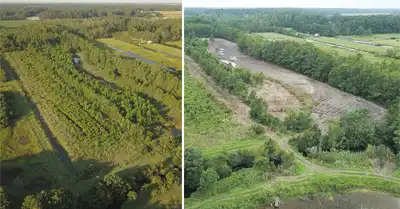
Some farmers and gardeners in Virginia have also turned to alternative pest management methods such as integrated pest management (IPM) and biological control. IPM focuses on using a combination of methods to control pests, such as introducing natural predators or using cultural practices to prevent pest outbreaks. Biological control involves using natural enemies, such as beneficial insects or fungi, to control pest populations.
By implementing these alternative pest management methods and reducing pesticide use, Virginia can support a healthier environment for bees and other pollinators, as well as reduce potential negative impacts on human health and the ecosystem as a whole.

Education and outreach efforts have been made to increase public awareness of the importance of bees and the threats they face. The Virginia Cooperative Extension provides educational resources for beekeepers and the public on beekeeping, pollinator conservation, and the importance of pollinators for agriculture. The Virginia Department of Agriculture and Consumer Services also offers outreach and educational programs on pollinator protection for farmers and the public.
In addition, local organizations such as the Beekeepers Guild of Central Virginia and the Blue Ridge Beekeepers Association provide resources and training for beekeepers and host events that are open to the public to learn about bees and their role in the ecosystem. These groups also work to promote beekeeping as a sustainable and viable agricultural practice. Overall, these education and outreach efforts are critical in promoting the health and protection of bee populations in Virginia.

Ongoing research has also focused on the impact of climate change on bee populations in Virginia. As temperatures rise and weather patterns become more unpredictable, bees and other pollinators may face new challenges in their foraging and reproductive behaviors. Researchers are working to understand how climate change may affect bee habitats, food sources, and overall health, and how to mitigate these impacts through habitat restoration and other conservation efforts.
Moreover, partnerships between researchers, beekeepers, and farmers are being developed to address the ongoing decline of bee populations and to identify strategies for promoting the health and resilience of these vital insects in Virginia’s ecosystems. These partnerships aim to share knowledge, resources, and best practices for protecting and promoting bee populations across the state.

Citizen science initiatives have been launched in Virginia to engage the public in bee conservation efforts. The Virginia Master Naturalist program and the Virginia Native Plant Society have trained volunteers to collect data on bee populations and their habitat. The data collected by citizen scientists can help inform conservation strategies and monitoring efforts for bee populations in Virginia.

Conclusion
In conclusion, bees play a vital role in Virginia’s ecosystems as important pollinators for many crops and plants. Honey bees, non-native bees, and native bee species all contribute to the health and productivity of Virginia’s agricultural and natural systems. However, threats such as habitat loss, pesticide use, and disease pose significant challenges to bee populations in Virginia. Conservation efforts such as habitat restoration, reduction of pesticide use, education and outreach, research, and citizen science initiatives are essential for the preservation of bee populations and the ecological balance of Virginia’s ecosystems. Through these efforts, Virginia can continue to promote the health and survival of its bees and ensure the sustainability of its agricultural and natural systems for generations to come.
Do You Have a Bee Problem?
Learn more about our Bee Removal Program or call us at (540) 776-1769

